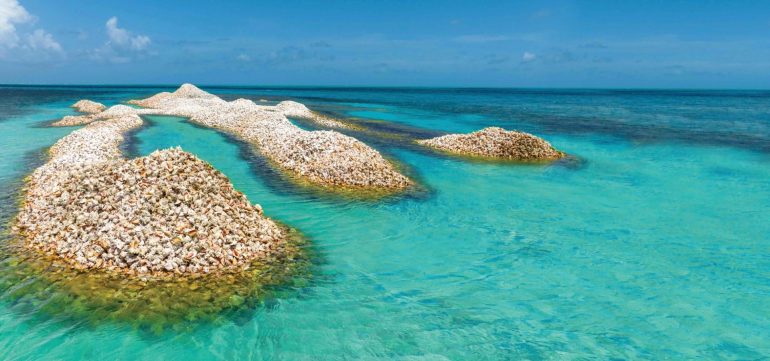For the next few months leading up to BVI Reef Check 2010, each issue of Yacht Guide will highlight an organism from the Reef Check Indicator Species Checklist. The Global Coral Reef Crisis: Trends and Solutions, a Reef Check publication, states, “The goal of Reef Check monitoring is to detect ecologically and statistically significant changes on coral reefs that are caused by human activities.” The BVI chapter has surveyed since Reef Check’s inception in 1997. We at Yacht Guide aim to raise awareness for this worthy cause.
Photos by BVI Reef Check volunteer Nick Seth-Smith.
Twelve years ago in Hanauma Bay, Hawaii, on my first snorkelling excursion, I encountered, five feet below me, the pointy face of a toothy, lidless creature that resembled a child’s drawing of a nightmare. As soon as I saw it, I swam very quickly in the other direction, not stopping until I reached the shore. After I caught my breath, I consulted a fish species chart and learned that I’d seen a moray eel (Muraenidae). Since then, I’ve seen these intimidating mouth-breathers on other snorkelling trips, and even though I now know they are fairly shy creatures, I still tend to give them a wide berth. This may be in part due to the moray eel scene in Jaws: The Revenge which was probably the only scary part of that movie, most likely because the moray eel was real as opposed to the very fake looking shark.
The more I read about moray eels, the more impressed I become with their anatomy. Wikipedia informs me that moray eels have a second set of inner jaws, called pharyngeal jaws, located in their throat. First they bite their prey with their pincer-like outer jaws, then the second set of jaws come forward and grip the prey, retracting it into their gullet. Their teeth are backward facing and often contain bacteria which can cause infection in humans, but moray eels do not typically attack humans. They are nocturnal hunters, and bites to humans usually result as a matter of self-defence. While I respect moray eels' complex biology and aversion to humans, I’m not about to adopt one as a pet.

According to The Global Coral Reef Crisis, “Moray eels were added to the Reef Check protocol in 2001 as another global indicator for fishing impacts.” The report asserts the eels are an easy target for spear fishing because of their large size, territorial behaviour and the fact that they live in a defined hole. In their first year as an indicator species, moray eels were not detected in 81% of the 302 reefs surveyed worldwide, the publication reports.
Randall Keil, who operates Paradise Watersports on Peter Island and also volunteers for Reef Check, informs me that novice reef surveyors may overlook moray eels on their dives. A statistic from the Reef Environmental Education Foundation (REEF) reports that novice surveyors found eels on 27% of their dives while expert divers found them on 35%. Since moray eels are nocturnal and tend to remain tucked in their holes, they are not as apparent as other fish.
Both experienced and inexperienced Reef Checkers should pay close attention to alcoves where moray eels may live in the hopes of catching a glimpse of this frightening but fascinating species.
Each year, volunteers from the BVI and abroad participate in Reef Check, a global effort that monitors the Earth’s reef ecosystems. A non-profit organization, Reef Check covers its operating costs with much-appreciated donations. To inquire about donating or participating, email [email protected].






